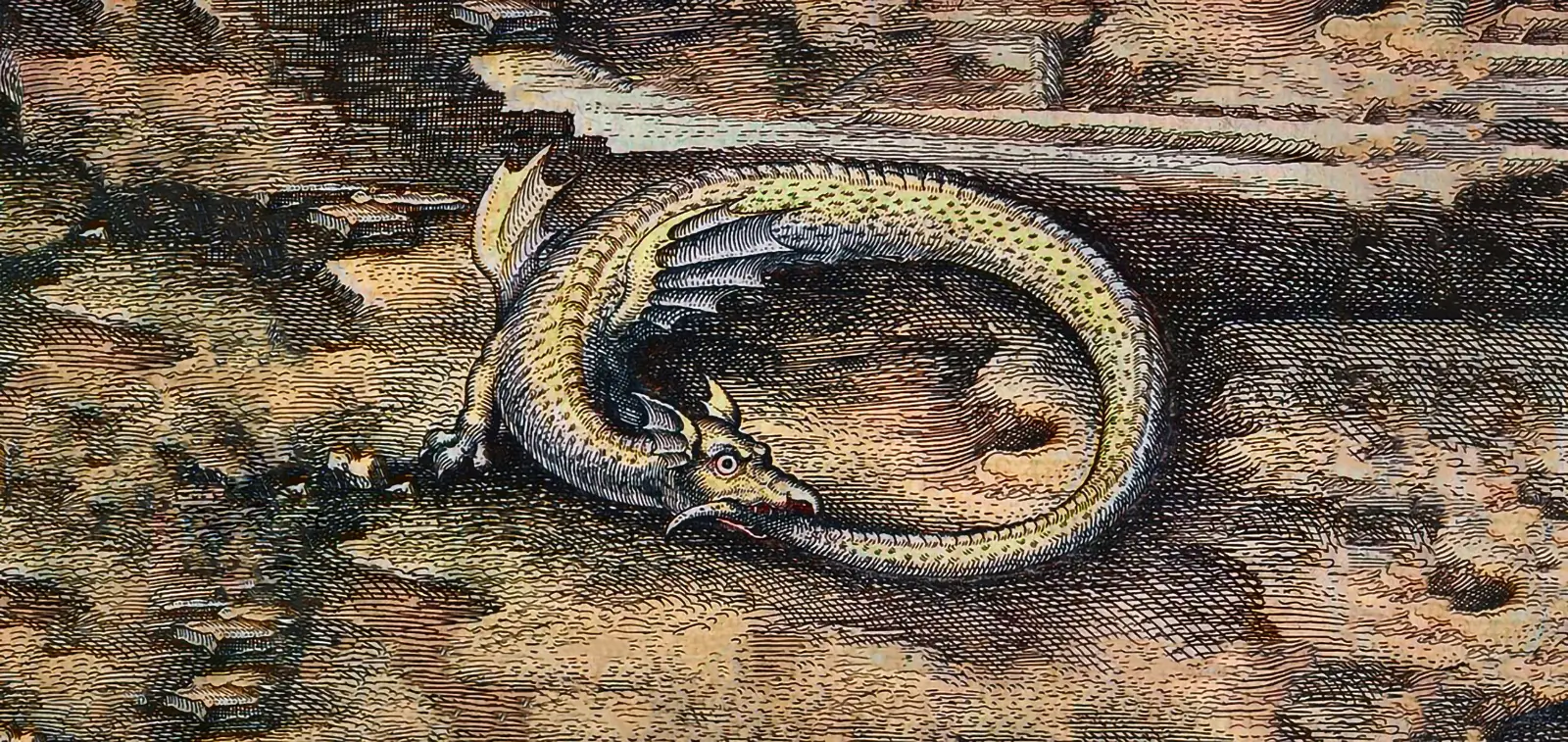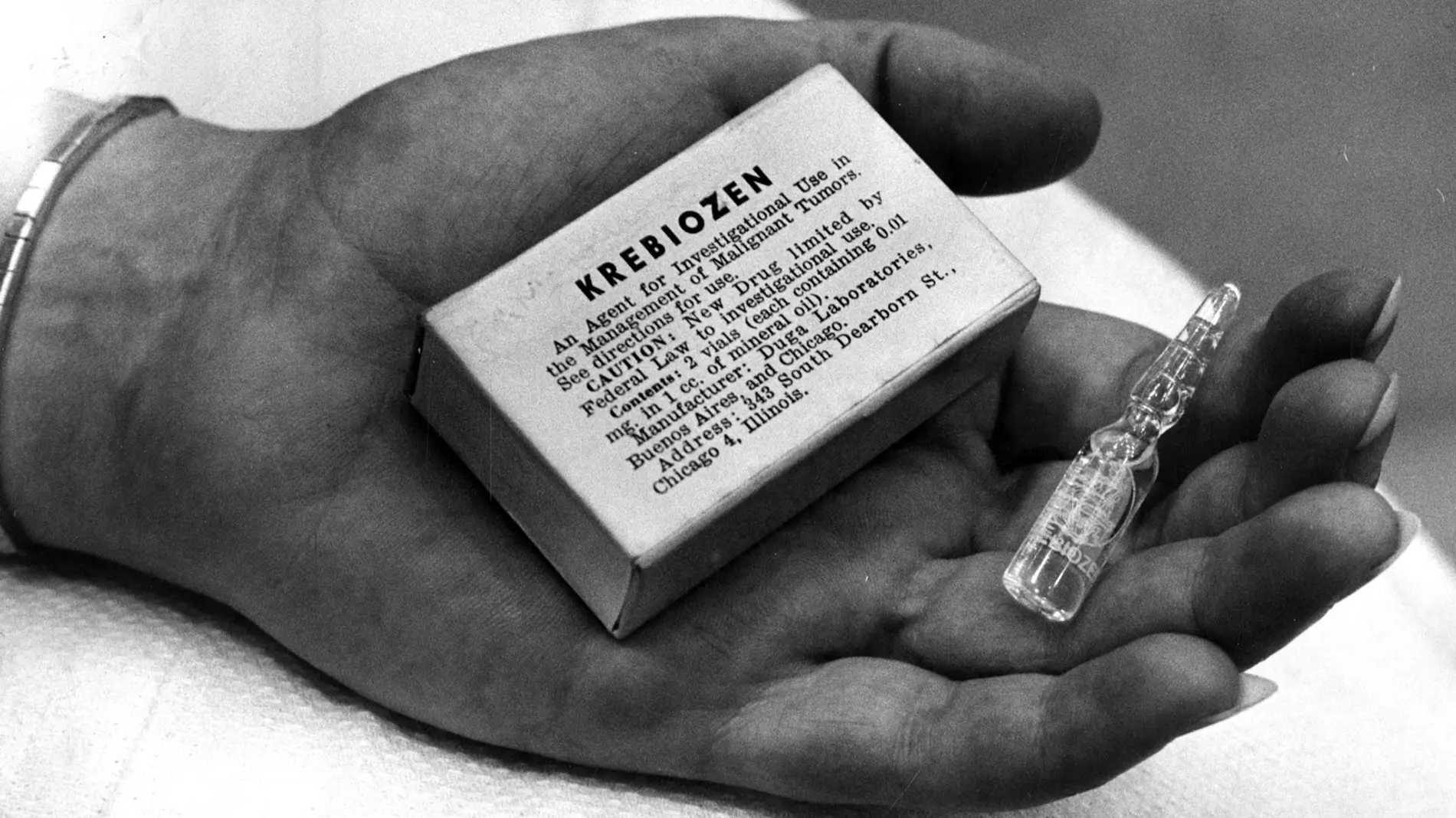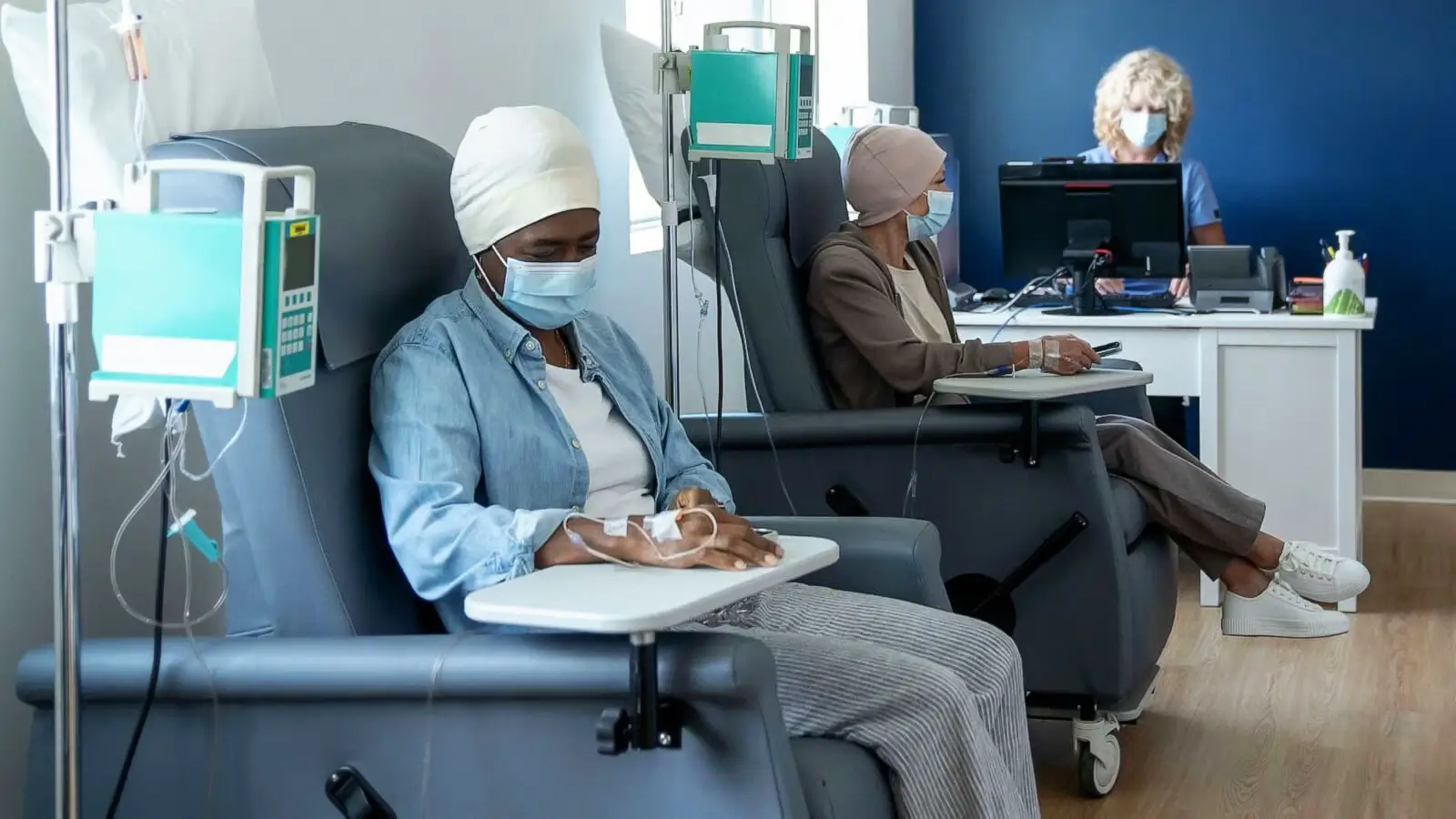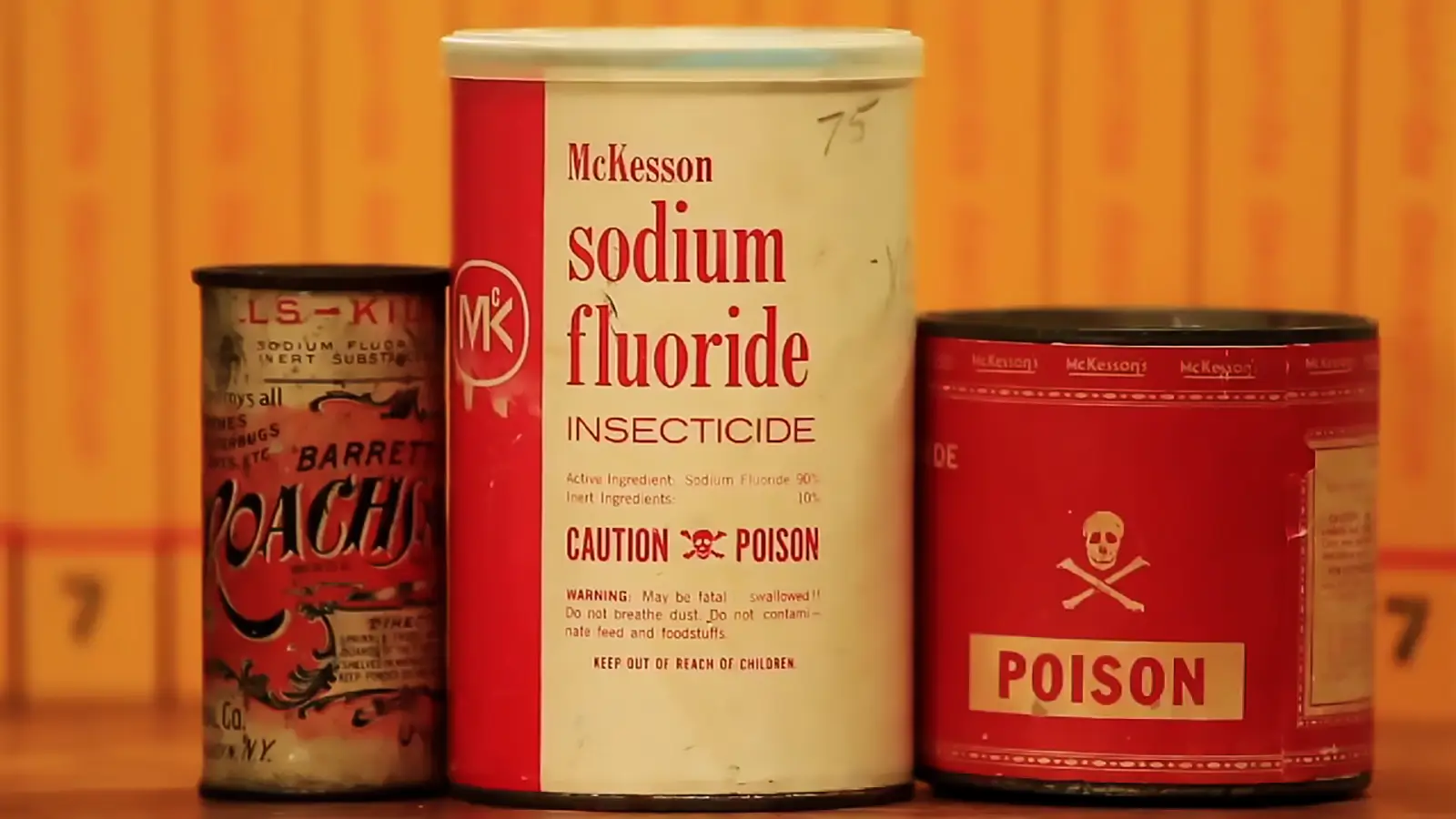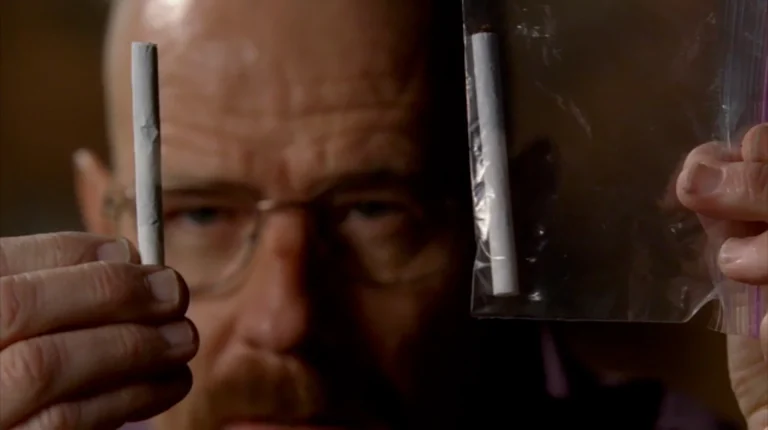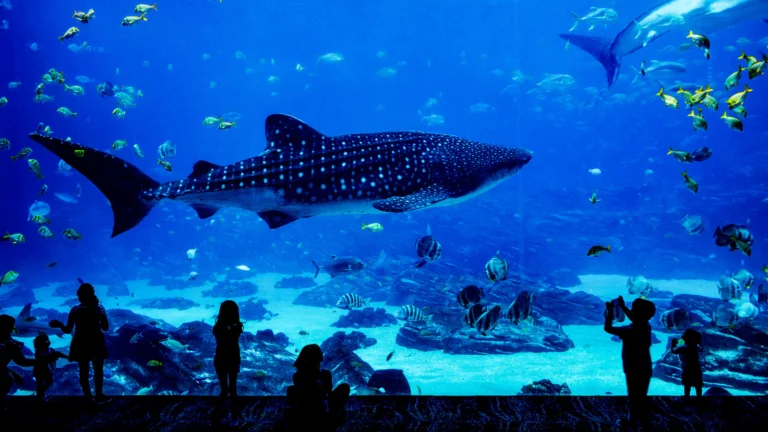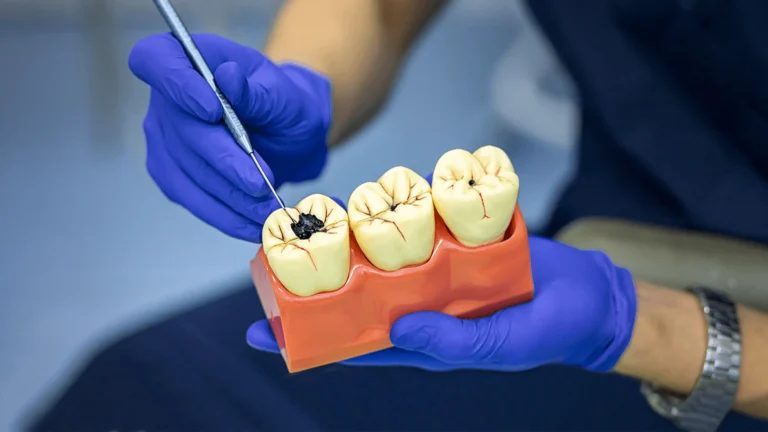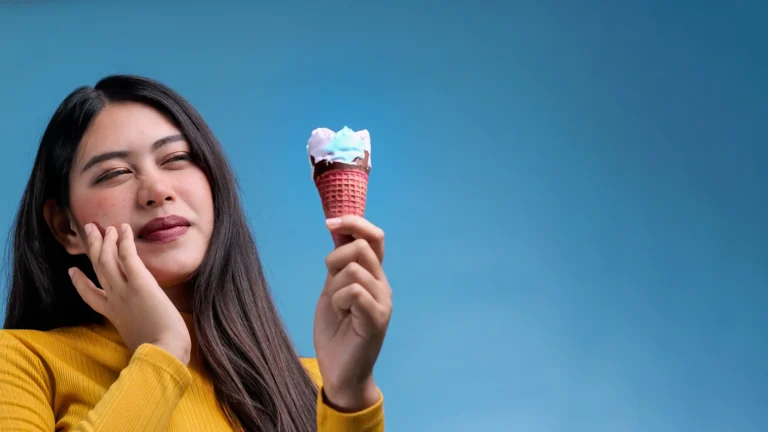Cancer, The Forbidden Cures-Rife Machine, Revue Historique
Le taux de récupération des patients atteints d'un cancer non traitable et déclarés en phase terminale en utilisant la technologie de résonance Rife Machine était de 100 %.
Milos Pokimica
Écrit par : Milos Pokimica
Examiné Médicalement Par : Dr. Xiùying Wáng, M.D.
Mis à jour le 9 juin 2023Royal Raymond Rife a développé une technologie qui est encore couramment utilisée aujourd'hui dans les domaines de l'optique, de la microscopie, de l'électronique, de la radiochimie, de la biochimie, de la balistique et de l'aviation, et en particulier dans l'imagerie et la microscopie médicale. Royal Raymond Rife a également développé une technologie (la machine Rife) dont vous n'avez probablement jamais entendu parler. Au cours de sa vie, il a reçu 14 récompenses différentes. Rife a fréquenté l'université de Heidelberg en Allemagne. Il y a obtenu un doctorat honorifique en parasitologie. Rife a également reçu un doctorat honorifique en sciences de l'université de Californie du Sud en 1936.
Les inventions de Rifle comprennent le microscope ultraviolet hétérodynant, un microdissecteur et un micromanipulateur.
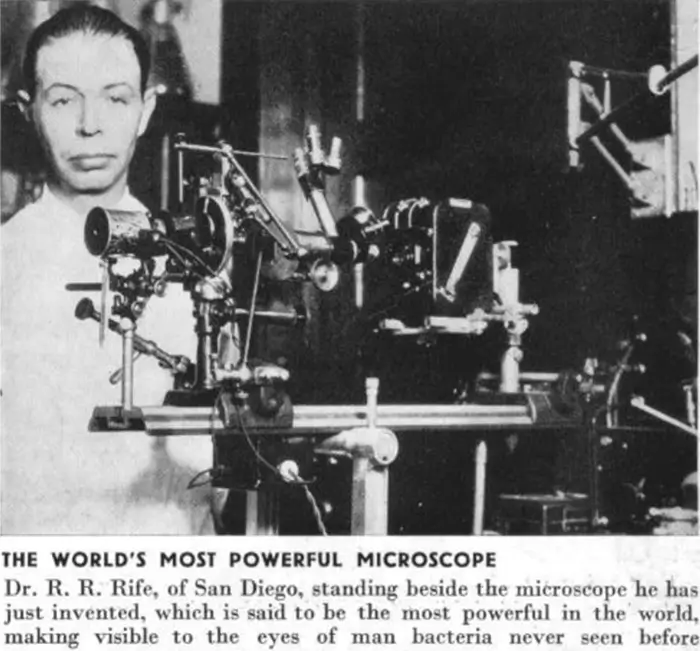
Il n'était pas simplement un charlatan, comme la plupart des personnes “ instruites ” dans le domaine médical voudraient vous le faire croire. Tout en poursuivant ses études universitaires, il a d'abord travaillé pour la société Carl Zeiss, dans leurs bureaux de New York, puis dans leurs bureaux en Allemagne, où il a collaboré directement avec Carl Zeiss, Hans Luckel et d'autres scientifiques à la recherche, la conception et la production de microscopes d'excellente qualité. Il a passé cinq ans à travailler avec ce groupe pendant qu'il fréquentait l'université de Heidelberg. Il est indiqué que Rife a travaillé avec la marine américaine avant et pendant la Première Guerre mondiale et qu'il a été nommé lieutenant-commandant de l'USNR. Au cours des années qui ont précédé la grande dépression, le Dr Rife a travaillé à la fois pour le gouvernement américain et pour la société Carl Zeiss Optics. À une certaine période, ses ressources financières se sont épuisées et il a accepté un emploi de chauffeur pour le multimillionnaire Henry Timkin. La collaboration entre le Dr Rife et Henry Timkin s'est avérée très fructueuse pour les deux parties. Timkin fabriquait des roulements à rouleaux. Certains de ces roulements s'effritaient en raison d'imperfections dans l'acier utilisé pour les fabriquer. Rife a conçu et construit un appareil à rayons X qui contrôlait chaque roulement sortant de la chaîne de production et rejetait tous ceux qui étaient défectueux avant qu'ils ne puissent être expédiés comme produits finis. Il a ainsi permis à l'entreprise d'économiser des millions. Timkin était tellement satisfait qu'il a mis en place un paiement mensuel à vie pour Rife afin de lui fournir l'appareil à rayons X spécialisé pour son environnement de production.
Henry Timkin et son partenaire, Bridges, sont restés tellement fascinés par le Dr Rife et son travail qu'ils ont créé un fonds pour financer un laboratoire entièrement équipé à Point Loma, en Californie, et pour supporter les dépenses d'un programme de recherche dans le laboratoire qui a été créé. . Dans le laboratoire mentionné ci-dessus, il a effectué la plupart de ses expériences. À un moment donné, Rife avait jusqu'à douze assistants de laboratoire travaillant pour lui. En 1916, les microscopes les plus puissants pouvaient atteindre un grossissement de 2500 diamètres. Avec cet instrument, un scientifique pouvait voir des parasites, des moisissures et de nombreuses bactéries, mais personne n'avait vu de virus.
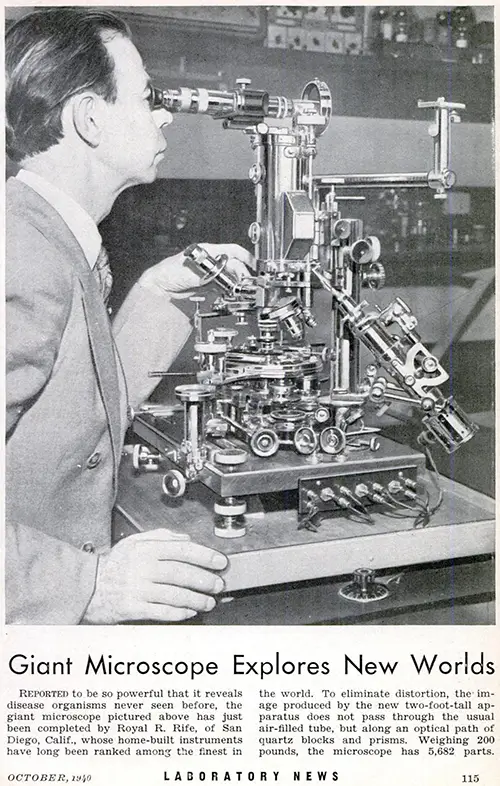
Rife a construit un instrument grossissant qui fonctionnait selon un principe différent de celui des microscopes existants à son époque. Le premier microscope qui lui a permis de voir un virus a été construit en 1920. Rife est le créateur du microscope universel, qu'il a présenté au monde en 1933 comme le microscope le plus puissant au monde. L'une des nombreuses caractéristiques intéressantes de ce microscope est que, contrairement au microscope électronique, le microscope universel ne tue pas les spécimens observés et permet d'observer des spécimens vivants dans toutes les conditions, ce qui signifie qu'il ne dépend pas de la fixation ou de la coloration pour rendre les images visibles ou nettes. Grâce à son microscope, Rife est devenu le premier être humain à voir un virus vivant, et jusqu'à très récemment, le microscope universel était le seul à pouvoir observer des virus vivants. Les microscopes électroniques modernes tuent instantanément tout ce qu'ils observent. Le microscope Rife permet d'observer l'activité intense des virus vivants qui changent de forme pour s'adapter aux changements de leur environnement, se répliquent rapidement en réponse aux agents cancérigènes et transforment les cellules normales en cellules tumorales. Rife y est parvenu en utilisant différentes formes d'éclairage pour rendre le virus visible. Il a d'abord utilisé la technique consistant à colorer les sujets à l'aide de lumière, car il avait compris que les particules des colorants chimiques étaient beaucoup trop grosses pour pénétrer dans les structures qu'il tentait de visualiser.
De plus, les colorants utilisés en microscopie sont souvent mortels pour les spécimens. L'un des facteurs qui a permis d'obtenir ces images originales était l'utilisation par Rife d'un outil appelé prisme à contre-rotation Risley. Le rayon réfracté et polarisé rendait normalement invisible l'organisme, qui devenait alors visible dans une couleur propre à sa structure ou à sa composition chimique. Tous les éléments optiques étaient en quartz massif, qui laisse passer les rayons ultraviolets. Par ce moyen, Rife a découvert que différentes bactéries et virus brillent à des fréquences différentes. Si vous ne comprenez pas la science derrière vous pouvez lire cet article Cancer, The Forbidden Cures-Rife Machine, revue scientifique. Cela a prouvé que les organismes pouvaient être classés par leur indice de réfraction ou en d'autres termes leur fréquence de résonance. En d'autres termes, il a découvert qu'ils vibraient à des fréquences différentes. Rife a lentement classé la signature spectroscopique unique de chaque microbe, à l'aide d'un accessoire de spectroscope à fente. Ensuite, il a progressivement tordu les prismes pour focaliser la lumière d'une longueur d'onde individuelle sur le micro-organisme qu'il examinait. Ensuite, il a résonné avec la fréquence de signature spectroscopique du microbe sur la base du fait maintenant établi que chaque molécule oscille à sa fréquence distincte.
En utilisant une longueur d'onde de résonance, les micro-organismes qui ne peuvent pas être vus en lumière blanche deviennent soudainement visibles comme un flash de lumière lorsqu'ils sont exposés à la fréquence de couleur qui résonne avec leur signature spectroscopique distincte. Rife était capable de voir ces organismes autrement invisibles et de les observer comment ils se comportent. Il pouvait voir des organismes que personne d'autre ne pouvait voir avec des microscopes ordinaires.
Dans les années 1930, Rife était tellement en avance sur ses collègues qu'il leur était difficile de comprendre ce qu'il faisait réellement sans se rendre directement à San Diego, dans le laboratoire de Rife, pour voir par eux-mêmes à travers son microscope viral. Et plusieurs l'ont fait. L'une d'entre eux était Virginia Livingston. Elle a finalement quitté le New Jersey pour s'installer dans le quartier de Point Loma (San Diego) où vivait Rife et est devenue une visiteuse régulière de son laboratoire. Virginia Livingston est aujourd'hui reconnue pour avoir identifié l'organisme responsable du cancer chez l'homme, sur la base d'articles de recherche qu'elle a publiés en 1948. La vérité est que Rife avait identifié le virus du cancer chez l'homme dès 1920. Il l'avait appelé ‘ Cryptocides primordiales ’. Virginia Livingston l'a rebaptisé ‘ Progenitor Cryptocides ’. Royal Rife n'a jamais été mentionné dans ses articles.
En réalité, Rife a rarement été reconnu pour ses découvertes monumentales. C'était un scientifique modeste et humble, plus soucieux d'approfondir ses découvertes que d'ambition, de renommée et de gloire. Il a commencé ses recherches sur la tuberculose en 1920. En peu de temps, Rife s'est rendu compte que cette maladie ne se résumait pas à une simple bactérie. Cela l'a encouragé à mettre au point des microscopes “ antivirus ”, dont deux ont précédé l'Universal. Rife fut le premier scientifique à isoler et à photographier la tuberculose active ainsi que de nombreux autres virus. Rife travailla également à l'isolement d'un virus spécifique au cancer, remarquant qu'il dégageait une émanation rouge-violet unique. Il n'obtint aucun résultat jusqu'à ce qu'il laisse par erreur un tube à la lumière d'une lampe ionisante. Il remarqua que le tube s'était opacifié, enregistrant une activité.
Leur travail conduit à la première culture réussie du virus en dehors d'un hôte vivant. Rife a extrait le virus du cancer d'une ” masse mammaire humaine ”. Il l'a filtré, cultivé et recultivé plus de dix fois sur une période de deux cent quarante heures. Ils ont ensuite injecté la culture de dernière génération à un rat vivant. Le rat développait inévitablement un cancer. Rife extrayait alors le cancer, extrayait le virus et répétait le processus. Il a répété cette procédure plus de quatre cents fois.
Il a établi de manière catégorique que les tumeurs cancéreuses étaient dans tous les cas induites par des virus. Une fois que le Dr Rife a su comment voir un virus, l'étape logique suivante a été de mettre au point une méthode pour tuer le virus ou le microbe sans endommager l'hôte. Depuis l'époque de Nikola Tesla et de ses travaux, les scientifiques connaissaient le lien entre les fréquences et le fonctionnement du corps humain. Rife s'est donc tourné vers les fréquences électromagnétiques, car il pouvait détecter les bactéries et les virus à des fréquences uniques, puis les exposer et observer les effets. Il a découvert que chaque micro-organisme avait une fréquence distincte à laquelle il résonnait et était sans défense. Rife a appelé cela le “taux oscillatoire mortel.”
À maintes reprises, il observait le virus absorber l'énergie et mourir lorsqu'une certaine fréquence était appliquée. Parfois, ils explosaient même. Il créa des tableaux indiquant quels réglages de fréquence tuaient quels microbes ou virus. S'il n'avait pas inventé son microscope, il n'y aurait eu aucun traitement basé sur la résonance. De nombreux rapports et articles ont été publiés au sujet de ces réalisations extraordinaires. Son travail a été porté à la connaissance de nombreux médecins de la région sud de la Californie. Certains d'entre eux sont même venus de tous les États-Unis pour observer ce qu'il faisait et vérifier ses résultats. En novembre 1931, le Dr Milbank Johnson a convoqué quarante-quatre médecins de la région de Los Angeles chez lui, à Pasadena, en Californie, afin de rendre hommage à Rife pour le travail qu'il accomplissait. Le Dr Royal Rife a été reconnu comme l'homme qui a mis fin à toutes les maladies qui ont jamais existé. Du moins, celles qui sont contagieuses et peuvent être bombardées par résonance. Le banquet a même été baptisé “ La fin de toutes les maladies ”.”
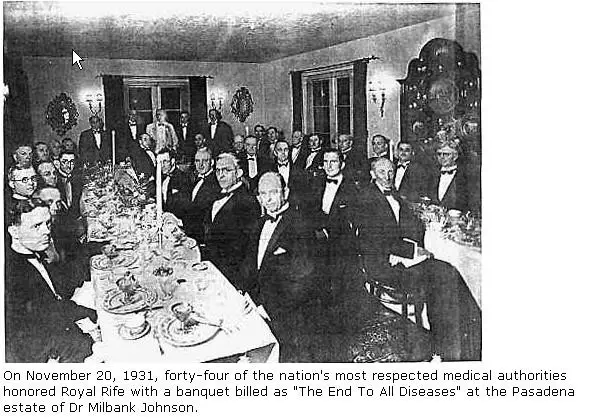
En 1934, un groupe de médecins dirigé par le Dr Milbank Johnson de Pasadena, en Californie, dans le cadre d'une expérience parrainée par l'Université de Californie, a amené seize patients en phase terminale d'un hôpital de San Diego. Ils ont été irradiés avec les fréquences recommandées par le Dr Royal Rife pendant quatre-vingt-dix jours pour activer la résonance et détruire le cancer.
C'était la première fois dans l'histoire que des patients cancéreux en phase terminale étaient complètement guéris.
Relisez cette phrase.
C'était la première fois dans l'histoire que des patients cancéreux en phase terminale étaient complètement guéris.
Quatorze des patients sont devenus complètement libres de tout cancer à ce moment-là. La thérapie a ensuite été ajustée, ce qui signifie que la fréquence de résonance et les deux patients restants ont également répondu.
Le taux de guérison des patients atteints d'un cancer incurable et déclarés en phase terminale par le secteur médical traditionnel grâce à l'utilisation de la technologie de résonance de Rife était de 100%.
Relisez cette phrase.
Le taux de guérison des patients atteints d'un cancer non traitable et déclarés en phase terminale par l'industrie médicale acceptée par en utilisant la résonance de Rife la technologie était de 100 %.
En 1939, le Dr Rife fut officiellement invité à prendre la parole devant la Royal Society of Medicine à Londres, en Angleterre, qui avait vérifié ses conclusions. Il reçut également des invitations pour donner des conférences en France et en Allemagne. Le Dr R. Seidel décrivit et publia officiellement la thérapie par tube à rayons Rife pour le traitement du cancer dans le journal du Franklin Institute en février 1944. Les traitements du Dr Rife contre les infections virales et bactériennes ainsi que ses microscopes ont été décrits et salués par le Smithsonian Institute dans un article publié dans la revue de l'institut en 1944. Un rapport du Smithsonian Institution confirme les travaux de Rife. Intitulé “ The New Microscope ” (Le nouveau microscope) par le Dr R.E. Seidel (rapport #3781), il indique :
“ Sous le microscope universel, on peut observer que des organismes pathogènes tels que ceux du cancer... et d'autres maladies succombent lorsqu'ils sont exposés à certaines fréquences mortelles... ”
Il a fallu beaucoup de temps à Rife, des années de sa vie, travaillant 48 heures d'affilée jusqu'à ce qu'il détecte les fréquences qui détruisaient explicitement l'herpès, la poliomyélite, la méningite spinale, le tétanos, la grippe et un nombre immense d'autres organismes pathogènes dangereux.
Au début, on a tenté de racheter Rife. Morris Fishbein, un médecin devenu rédacteur en chef du Journal of the American Medical Association, a envoyé un avocat à Rife avec “ une offre qu'il ne pouvait refuser ”.”
Rife a refusé.
On ne connaîtra jamais les termes exacts de cette offre mais il est fort probable qu'ils ne souhaitaient pas que sa machine devienne disponible dans le commerce. Ils ont probablement essayé de le soudoyer pour détruire son invention. Par exemple, lorsque Fishbein a fait une offre similaire à Hoxsey, il a refusé. Fishbein a utilisé ses associations gouvernementales extrêmement fortes pour faire arrêter Hoxsey 125 fois en 16 mois. Les accusations ont toujours été rejetées par le tribunal, mais le harcèlement a continué. C'est devenu si grave que l'AMA a affiché des dépliants dans tous les bureaux de poste de tout le pays pour effrayer les gens d'utiliser Hoxsey et tout autre traitement alternatif contre le cancer. Cependant, ce qu'il faut comprendre, c'est qu'il n'a pas agi seul. Il n'était qu'un leader de l'AMA à l'époque. Plus tard en 1961, il est devenu le rédacteur en chef fondateur de Medical World News, un magazine pour les médecins.
Cependant, Fishbein et l'AMA ont dû se rendre compte que cette approche se retournerait contre eux si elle était utilisée contre Rife. Ils ne pouvaient pas arrêter Rife comme ils l'avaient fait avec Hoxsey pour avoir exercé la médecine sans licence. De plus, le procès monté de toutes pièces sur la base de fausses accusations aurait conduit les éminentes autorités médicales travaillant avec Rife à présenter leur témoignage en sa faveur, et la nouvelle de son invention aurait été rendue publique. La défense présenterait certainement des preuves telles que l'étude médicale réalisée en 1934 avec l'USC. S'ils organisaient un procès public sur une thérapie indolore qui avait guéri 100% de patients atteints d'un cancer en phase terminale, avec des preuves médicales, et qui ne coûtait rien à part un peu d'électricité. Mais ce n'était pas ce que voulaient les pouvoirs en place. Rife n'était pas sorti de nulle part. C'était un scientifique renommé qui avait passé des décennies à rassembler des preuves précises de son travail. Il disposait de films et de photographies en stop-motion qui pouvaient être rendus publics, etc.
Ils ont dû utiliser différentes tactiques et ils ont été utilisés.
Le premier incident fut la disparition progressive de films, photographies, composants, documents écrits et autres preuves du laboratoire de Rife. Le coupable n'a jamais été arrêté.
Puis, alors que Rife essayait de reproduire ses données manquantes (lorsque les ordinateurs n'étaient pas disponibles), quelqu'un a vandalisé ses coûteux microscopes à virus.
Puis, tout le laboratoire a “ mystérieusement ” brûlé au moment où les responsables du laboratoire rendaient visite à Rife à San Diego.
Puis, les documents du laboratoire de Rife à San Diego ont “ mystérieusement ” disparu, tout comme certaines pièces de ses microscopes.
Le coup de grâce a été porté plus tard, lorsque la police a illégalement saisi le reste des 50 années de recherche de Rife.
Ensuite, le médecin qui a le plus aidé le Dr Royal Rife à être reconnu pour son travail était le Dr Milbank Johnson. Un jour, il a été emmené à l'hôpital pour ce qui était considéré comme un problème mineur par les médecins traitants en 1944, mais il y est mort "mystérieusement" d'une intoxication alimentaire.
Rife et ses partenaires avaient créé une société appelée Ray Beam Tube Corporation afin de construire la machine Rife. Il avait embauché un ingénieur et lui avait confié la production. Fishbein aurait soutenu l'ingénieur dans son action en justice contre Rife. Le procès fut long et coûteux. Rife l'emporta, mais le coût du procès entraîna la ruine financière de la société et, en pleine période de grande dépression, la fin de la production. Une somme colossale a été dépensée pour s'assurer que les médecins qui avaient vu la thérapie de Rife et connaissaient son travail oublient tout, ou bien ils ont été menacés par l'Association médicale américaine et l'État de Californie de perdre leur licence s'ils continuaient à suivre le programme. Arthur Kendall, qui travaillait avec Rife sur le virus du cancer, a accepté près d'un quart de million de dollars pour ‘ prendre sa retraite ’ soudainement au Mexique. Le Dr George Dock, qui collaborait avec Rife, a été réduit au silence grâce à une énorme subvention, ainsi qu'aux plus hautes distinctions que l'AMA pouvait lui accorder. Les Drs Couche et Milbank Johnson ont également abandonné les travaux de Rife et sont revenus à la prescription de médicaments.
Ce traitement a détruit émotionnellement Rife lui-même et tout son programme a été dissous. La perte de son laboratoire et les conséquences mentales et émotionnelles du procès ont suffi à faire de Rife un alcoolique. En 1950, Rife a travaillé à l'amélioration des instruments énergétiques avec John Crane. John Crane a fini par obtenir les droits sur les microscopes. En 1960, les autorités médicales ont fait irruption dans le laboratoire de Crane et ont confisqué tous les appareils et tous les dossiers. Cela ne leur a pas suffi, et il a également été accusé de fraude par l'État de Californie et envoyé en prison.
Rife se serait échappé au Mexique à cette époque. Il n'a travaillé avec personne après ce dernier incident. Rife est décédé en 1971, à l'hôpital Grossman d'El Cajon, en Californie, d'une crise cardiaque après avoir passé les dernières années de sa vie dans une maison de retraite El Cajon. Il était sans amis ni fonds. Il a découvert une approche électronique incroyablement simple pour guérir toutes les maladies. Il a fait la découverte à faible coût qui pourrait mettre fin à la souffrance d'innombrables millions de personnes. Cela aurait changé la vie sur Terre pour toujours. Certes, le monde médical se précipiterait pour l'embrasser avec toutes les récompenses imaginables et les récompenses financières imaginables. Vous avez contracté un remède universel qui rend les médicaments obsolètes, et le seul coût de son utilisation est l'électricité. L'industrie pharmaceutique pourrait donc être ravie d'entendre parler de votre travail. Bien sûr, certains d'entre vous peuvent considérer cela comme une fiction amusante. Faites vos propres recherches et croyez ce que vous voulez. En réalité, cette technologie pourrait avoir un grand potentiel si elle est correctement développée. La seule question ici est de savoir si vous pourriez cibler tous les virus ou seulement certains d'entre eux ? Nous savons qu'il a guéri le cancer à 100 %. Cependant, si la résonance des microbes est trop proche du reste des cellules humaines, le rayonnement leur transférerait une partie de l'énergie en brûlant des tissus réguliers, mais si la fréquence est distinctive, cela pourrait fonctionner. Aujourd'hui, par exemple, il y a des milliers de personnes qui ont un diagnostic de maladie de Lyme, mais le traitement antibiotique ne produit pas de soulagement à long terme. La thérapie par machine Rife s'avère précieuse et la seule thérapie à long terme disponible pour la maladie de Lyme. Mais nous ne le saurions jamais vraiment. Il n'y a pas de données originales qui restent du travail de Rife. Aucune science après lui n'a jamais été faite.
L'ampleur de ce crime insensé éclipse tous les meurtres de masse de l'histoire.
Références :
Passages sélectionnés à partir d'un livre : Pokimica, Milos. Devenir vegetarien? Examen de la science, partie 2. Kindle éd., Amazone, 2018.
Articles Similaires
Vous avez des questions sur la nutrition et la santé ?
J'aimerais avoir de vos nouvelles et y répondre dans mon prochain post. J'apprécie votre contribution et votre opinion et j'ai hâte d'avoir de vos nouvelles bientôt. Je vous invite également à nous suivre sur Facebook, Instagram et Pinterest pour plus de contenu sur l'alimentation, la nutrition et la santé. Vous pouvez y laisser un commentaire et entrer en contact avec d'autres passionnés de santé, partager vos conseils et expériences, et obtenir le soutien et les encouragements de notre équipe et de notre communauté.
J'espère que ce billet a été instructif et agréable pour vous et que vous êtes prêt à mettre en pratique les connaissances que vous avez acquises. Si vous avez trouvé ce billet utile, veuillez le partager à vos amis et à votre famille qui pourraient également en bénéficier. On ne sait jamais qui peut avoir besoin de conseils et de soutien dans son parcours de santé.
– Vous pourriez aussi aimer –

Apprendre la Nutrition
Milos Pokimica est docteur en médecine naturelle, nutritionniste clinique, rédacteur en santé médicale et nutrition et conseiller en sciences nutritionnelles. Auteur de la série de livres Devenir vegetarien ? Examen des sciences, il exploite également le site Web de santé naturelle GoVeganWay.com
Avis de non-responsabilité médicale
GoVeganWay.com vous propose des critiques des dernières recherches liées à la nutrition et à la santé. Les informations fournies représentent l'opinion personnelle de l'auteur et ne sont pas destinées ni implicitement à remplacer un avis médical professionnel, un diagnostic ou un traitement. Les informations fournies sont fournies à titre informatif uniquement et ne sont pas destinées à remplacer la consultation, le diagnostic et/ou le traitement médical d'un médecin ou d'un prestataire de soins de santé qualifié.NE JAMAIS IGNORER LES CONSEILS MÉDICAUX PROFESSIONNELS OU RETARDER LA RECHERCHE DE SOINS MÉDICAUX EN RAISON DE QUELQUE CHOSE QUE VOUS AVEZ LU OU ACCÉDÉ SUR GoVeganWay.com
N'APPLIQUEZ JAMAIS DE CHANGEMENTS AU STYLE DE VIE OU TOUT CHANGEMENT À LA SUITE DE QUELQUE CHOSE QUE VOUS AVEZ LU SUR GoVeganWay.com AVANT DE CONSULTER UN PRATICIEN MÉDICAL AGRÉÉ.
En cas d'urgence médicale, appelez immédiatement un médecin ou le 911. GoVeganWay.com ne recommande ni n'approuve aucun groupe, organisation, test, médecin, produit, procédure, opinion ou autre information spécifique pouvant être mentionné à l'intérieur.
Choix de l'éditeur -
Milos Pokimica est rédacteur spécialisé dans la santé et la nutrition et conseiller en sciences nutritionnelles. Auteur d'une série de livres Devenir vegetarien ? Examen des sciences, il exploite également le site Web de santé naturelle GoVeganWay.com
Derniers articles –
Top Des Nouvelles Sur la Santé - ScienceDaily
- Indoor tanning triples melanoma risk and seeds broad DNA mutationsle décembre 15, 2025
Researchers discovered that tanning beds cause widespread, mutation-laden DNA damage across almost all skin, explaining the sharply increased melanoma risk. Single-cell genomic analysis revealed dangerous mutations even in sun-protected regions. Survivors’ stories underscore how early tanning habits have lifelong consequences. The findings push for stricter policies and clear public warnings.
- Researchers identify viral suspects that could be fueling long COVIDle décembre 15, 2025
Scientists are uncovering a new possibility behind long COVID’s stubborn symptoms: hidden infections that awaken or emerge alongside SARS-CoV-2. Evidence is mounting that viruses like Epstein-Barr and even latent tuberculosis may flare up when COVID disrupts the immune system, creating lingering fatigue, brain fog, and other debilitating issues.
- Harvard gut discovery could change how we treat obesity and diabetesle décembre 14, 2025
Scientists found that certain molecules made by gut bacteria travel to the liver and help control how the body uses energy. These molecules change depending on diet, genetics, and shifts in the microbiome. Some even improved insulin response in liver cells when tested in the lab. The findings could open the door to new ways of preventing or managing obesity and diabetes.
- A grad student’s wild idea triggers a major aging breakthroughle décembre 14, 2025
Senescent “zombie” cells are linked to aging and multiple diseases, but spotting them in living tissue has been notoriously difficult. Researchers at Mayo Clinic have now taken an inventive leap by using aptamers—tiny, shape-shifting DNA molecules—to selectively tag these elusive cells. The project began as an offbeat conversation between two graduate students and quickly evolved into a collaborative, cross-lab effort that uncovered aptamers capable of binding to unique surface proteins […]
- Natural compound supercharges treatment for aggressive leukemiale décembre 14, 2025
Forskolin, a plant-derived compound, shows surprising potential against one of the most aggressive forms of leukemia. Researchers discovered that it not only stops cancer cells from growing but also makes them far more vulnerable to chemotherapy by preventing them from pumping out the drugs meant to kill them. Experts say this dual action could help create safer, more powerful AML treatments with fewer harsh side effects.
- AI finds a hidden stress signal inside routine CT scansle décembre 14, 2025
Researchers used a deep learning AI model to uncover the first imaging-based biomarker of chronic stress by measuring adrenal gland volume on routine CT scans. This new metric, the Adrenal Volume Index, correlates strongly with cortisol levels, allostatic load, perceived stress, and even long-term cardiovascular outcomes, including heart failure risk.
- Tea may strengthen bones in older women while heavy coffee weakens themle décembre 13, 2025
A decade-long study of older women found that tea drinkers had slightly stronger bones, while moderate coffee drinking caused no harm. Heavy coffee intake—over five cups a day—was linked to lower bone density, especially in women who consumed more alcohol. Tea’s benefits may stem from catechins that support bone formation. The researchers say small daily habits could make a meaningful difference over time.
PubMed, #régime-vegan –
- Healthful and Unhealthful Plant-Based Diets and Their Association with Cardiometabolic Targets in Women Diagnosed with Breast Cancer: A Cross-Sectional Analysis of a Lifestyle Trialle décembre 11, 2025
CONCLUSIONS: Maintaining cardiometabolic risk factors within normal ranges is clinically relevant in BCS, and this may be more likely when a plant-based diet is consumed, especially if low in unhealthy plant foods.
- Dietary and Lifestyle Patterns and Their Associations with Cardiovascular and Inflammatory Biomarkers in Vegans, Vegetarians, Pescatarians, and Omnivores: A Cross-Sectional Studyle décembre 11, 2025
Background: Plant-based diets are associated with reduced cardiometabolic risk, yet the influence of lifestyle behaviors on these benefits remains insufficiently understood. Objective: To assess the combined impact of dietary patterns and lifestyle behaviors on body composition, lipid profiles, and inflammatory biomarkers in healthy young adults. Methods: In this cross-sectional study, 155 participants aged 18-39 years were categorized into four dietary groups: vegans (n = 48), vegetarians (n […]
- Functional and Nutritional Properties of Lion’s Mane Mushrooms in Oat-Based Desserts for Dysphagia and Healthy Ageingle décembre 11, 2025
Hericium erinaceus (Lion’s Mane mushroom) is a medicinal species recognised for its neuroprotective and antioxidant properties. This study investigated its potential as a functional ingredient in oat milk-based desserts formulated for individuals with dysphagia. Freeze-dried Lion’s Mane powder (LMP), containing high-quality protein (~16%, amino acid score 88%), dietary fibre (~31%), and phenolic compounds (72.15 mg GAE/g), was incorporated at varying levels using gelatin or iota-carrageenan […]
- “A football team with no midfield”: A qualitative analysis of anti-vegan stigma in Italyle décembre 7, 2025
A growing body of research has demonstrated the prevalence of unfavourable attitudes towards individuals who adhere to a vegan diet and has provided empirical evidence to support the existence of an anti-vegan ideology. The present study aims to contribute to extant knowledge by examining the social perception of veganism and vegans in Italy. Italy is a nation characterised by a traditional culture of food that serves as a significant catalyst for collective identification and national pride….
- Plant-based dietary index on the Mediterranean and a vegan diet: a secondary analysis of a randomized, cross-over trialle décembre 5, 2025
CONCLUSION: These findings suggest that, replacing animal products even with the “unhealthful” plant-based foods on a vegan diet was associated with weight loss.
Messages aléatoires –
Postes en vedette -
Dernières Nouvelles de PubMed, #alimentation végétale –
- Identification of effective plant-based oils for use in aquafeed: An evaluation of impact on gamete quality and developmental success using zebrafish (Danio rerio) as a screening organismpar Seyed-Mohammadreza Samaee le décembre 14, 2025
To evaluate the effectiveness of zebrafish as a screening system for identifying appropriate plant oils (POs) for aquafeed, Artemia nauplii (AN) were enriched with three single- cultivar olive oils (OO): Koroneiki, Parseh, and Arghavan. The resulting AN (ANKor, ANPar, ANArg, and AN36 [36 h starved AN, control]) were then fed to 360 fish (3.5 cm) for one month. The fatty acid (FA) profile of the AN was reflected in the ova and influenced both sperm motility and density, which in turn affected […]
- The Effect of Dietary Interventions on Human Vascular Function in the Context of Acute Psychological Stress: A Scoping Reviewpar Rosalind Baynham le décembre 14, 2025
Episodes of acute psychological stress increase the risk for cardiovascular diseases, partially through stress-induced impairments in vascular function. During psychologically stressful periods, individuals are more likely to consume unhealthy foods and fewer fruits and vegetables. Yet, the impact of dietary choices and their nutritional composition on vascular function in the context of psychological stress is unclear. In this scoping review, comprehensive database searches were carried out […]
- Plant-based diets, gut microbiota, blood metabolome, and risk of colorectal, liver and pancreatic cancers: results from a large prospective cohort study of predominantly low-income Americanspar Fangcheng Yuan le décembre 14, 2025
CONCLUSIONS: A diet high in healthy plant foods and low in animal foods was inversely associated with liver cancer risk and with CRC risk among screening-naïve participants. These associations may be partly mediated through gut microbiota and systemic metabolism.
- Vegetarian diet and likelihood of becoming centenarians in Chinese adults aged 80 years or older: a nested case-control studypar Yaqi Li le décembre 14, 2025
CONCLUSIONS: Targeting individuals of advanced age (80+ years) in China, we found that individuals following vegetarian diet had lower likelihood of becoming centenarians relative to omnivores, underscoring the importance of a balanced high-quality diet with animal- and plant-derived food composition for exceptional longevity, especially in the underweight oldest-old.
- Priority of nutrition and exercise in depression management: triangulating mini-review of past and recent evidence with clinical practice guidelinespar Shannon Rogers le décembre 14, 2025
CONCLUSIONS: Disparities that exist in leading depression management guidelines vis-à-vis inclusion of evidence-informed nutrition and PA/PE recommendations, warrant reconciliation. Evidence supporting anti-depressant WFPB nutrition and limiting pro-inflammatory animal-sourced food and UPF and supporting anti-inflammatory aerobic exercise and resistance training warrants being translated into national/international depression management guidelines as consistently as recommendations for…
- The effect of a diet based on vegetable and dairy protein on biochemical and functional indicators of sarcopenia in patients with liver cirrhosis: a randomized controlled trialpar Mahdiyeh Taghizadeh le décembre 13, 2025
CONCLUSIONS: In conclusion, a vegetable and dairy protein-based diet effectively inhibited significant elevations in ammonia levels compared to the standard diet in persons with liver cirrhosis; however, anthropometric parameters and muscle function did not differ between two groups.


